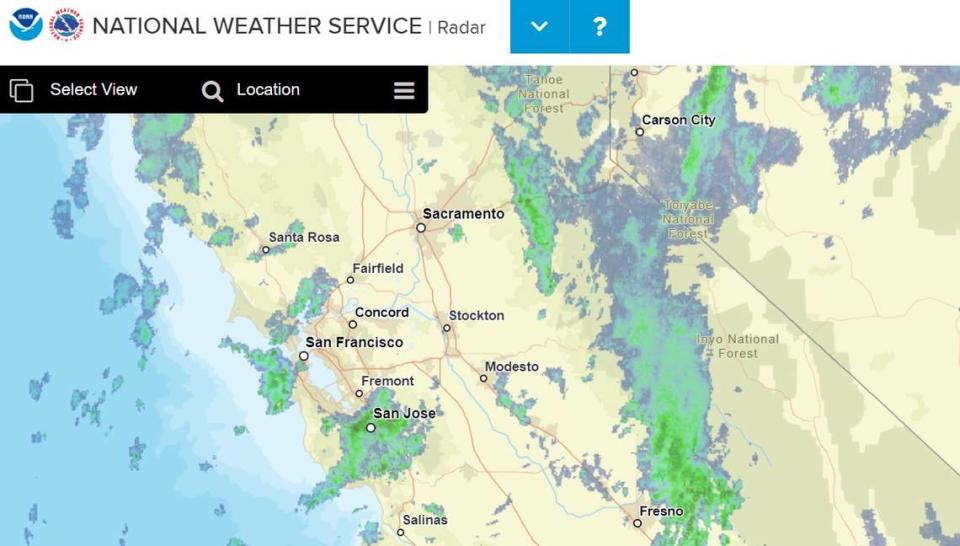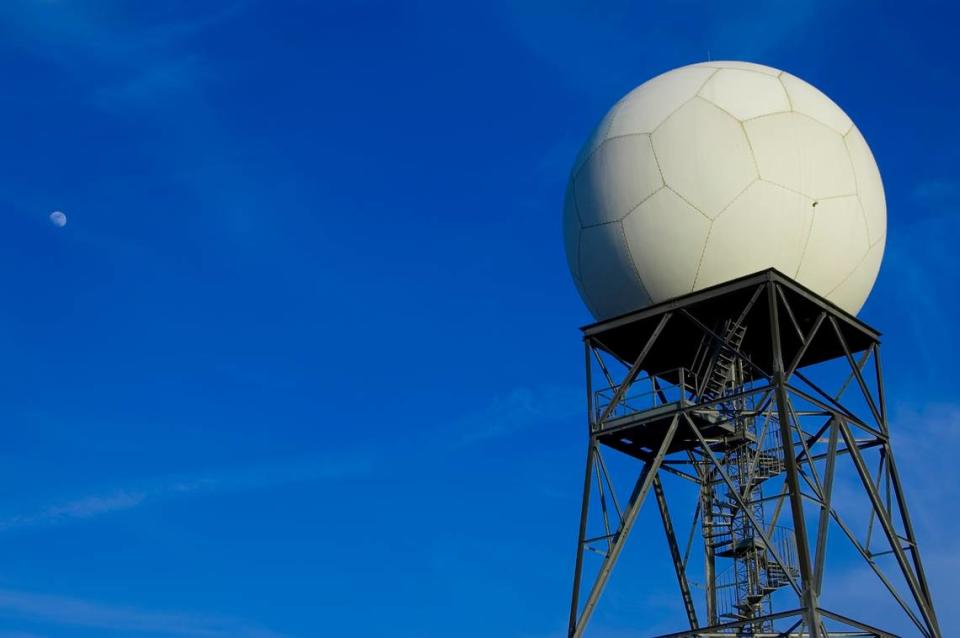How does Doppler radar work? Is it accurate? Here’s what to know about the weather tech
- Oops!Something went wrong.Please try again later.
Tune into any TV weather report and you’ll hear the words “Doppler radar” as meteorologists track storms across California.
But how does Doppler radar work? And how accurate is it?
The concept of radio detection and ranging, commonly known as radar, has been around since the late 1800s, according to the National Weather Service.
The Doppler effect, which detects energy pulses, was discovered by Austrian physicist Christian Doppler and named after him.
Doppler radar is “a remote sensing tool, which basically means it senses things in the atmosphere,” said Sara Purdue, a meteorologist with the National Weather Service in Sacramento.
Here’s how the technology works.

What is Doppler radar? How does it work?
Doppler radar is among the most advanced technology used to determine weather forecasts, according to the National Oceanic and Atmospheric Administration.
In fact, all modern weather radars are Doppler radars, NOAA said.
How does Doppler radar work?
Here’s how the technology works: Radio waves are sent out into the atmosphere from an antenna to detect precipitation targets in the atmosphere.
When the radio waves detect a target, energy is reflected back to the Doppler, according to the National Weather Service.
The larger the target, the larger the energy that’s reflected back to the Doppler.
“In essence, the frequency of the radar signal increases when precipitation is moving towards the radar and decreases when precipitation is moving away from the radar,” said The Weather Company, which bills itself as “the world’s leading provider of weather for people and businesses around the globe.”
“This can be vital in predicting tornadoes or gusts of wind,” the company said on its website.
“Depending on how strong the signal is and other factors, we can tell if the precipitation is strong or light, if it’s a thunderstorm, if it’s some other kind of atmospheric event,” Purdue said.

What weather surveillance radar does the National Weather Service use?
WSR-88D is considered by many to be the most powerful radar in the world, transmitting at 750,000 watts, the weather service said.
Since being built and tested in 1988, the weather surveillance radar has been installed and used operationally at more than 160 locations across the United States, the agency said, as well as Puerto Rico and several islands in the Pacific Ocean.
WSR-88D uses “pulsed Doppler radar,” meaning that it sends “brief pulses” into the atmosphere rather than a “continuous stream of waves,” according to NOAA.
“By calculating the amount of time it takes for a pulse to be transmitted, strike a target, and return to the radar antenna, the system can determine the range (or distance) of the target from the radar,” according to the NOAA website.
In an hour, a Doppler will spend seven seconds sending pulses out into the atmosphere, and the other 59 minutes will be spent listening for returns, according to NOAA.

Is the technology accurate in terms of weather forecasts?
Is Doppler radar always accurate when it comes to predicting the weather? The answer is: No, not always.
“It’s important to interrogate the data and make sure that you’re getting the full picture based on all of the data and not just one piece of it,” Purdue said.
When the Doppler sends a radio wave into the atmosphere, it can sometimes detect a supposed target that will send energy back but is not precipitation.
“The radar does have some logic built in to help it discriminate between precipitation and non-precipitation targets,” the weather service said on its website. “But sometimes we see curious things on our radar display.”
According to the weather service, some non-precipitation targets Doppler radar has detected in the past include:
Bird roosting rings, specifically during the fall months when birds are migrating,
Sun interference twice a day during sunset and sunrise from the “electromagnetic energy emitted by the sun,” and
Smoke plumes during the dry season or if there are controlled fires happening.
What do you want to know about life in Sacramento? Ask our service journalism team your top-of-mind questions in the module below or email servicejournalists@sacbee.com.

